#Mississippi Mound Builders
Explore tagged Tumblr posts
Text
Picture Cave: Unraveling the Mysteries of the Mississippian Cosmos: A Book Review
New blog post at The Storytelling Blog. Review of Picture Cave: Unraveling the Mysteries of the Mississippian Cosmos. I used this book extensively for #TheBigCinch background. #prehistoric #storyresearch
Picture Cave, edited by Carol Diaz-Grandados and colleagues. University of Texas Press, Austin. A lot of heavy academic research is sometimes needed to feed popular-culture fantasy fiction worldbuilding. Crucial to my novel, The Big Cinch, was Picture Cave: Unraveling the Mysteries of the Mississippian Cosmos. Picture Cave documents Mississippi Valley prehistoric cave art. It also shares the…
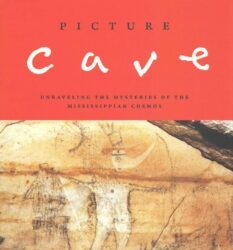
View On WordPress
#art#Cahokia#history#Indigenous#Mississippi Valley#Mississippian#Montag Press#Mound builders#Osage#Piasa#picture cave#Research#The Big Cinch#Underwater panther#Underwater spirit
1 note
·
View note
Text
Saw this Cree guy on tiktok essentially spreading misinformation that Crees are/were mound builders and anyone saying we weren't is "spreading lies" & his whole comment section was people thanking him for his "knowledge" like??? No, dude. Mound building wasn't really our thing. We liked NOT having a big ecological footprint, and that's why we lived in tipis & wigwams (even the word for tipi is originally closer to 'wigwam', mikîwâhp). Why would we build giant mounds if it goes against our worldview that you shouldn't harm or move the landscape more than necessary??
Part of his reasoning for this is the word "Mississippi" & that we extended all the way down to Florida because this word translates to mean the same thing in Cree as well (Misî-sîpiy) rather than acknowledging the fact that other Algonquian languages exist and have very similar languages to Cree, and will have very similar words (to the point of near exactness) & translations that mean the same thing, such as the tribes actually Native nearby the Mississippi.
#this is almost as weird as that time i saw a guy say that Crees carved rock formations because aliens told us to#it feels like this guy has some internal racism issues#and feels the need to justify Cree humanity & 'civilization' by INSISTING we were mound building city people#bc being nomads & woodland dwellers is too 'barbaric'
49 notes
·
View notes
Text
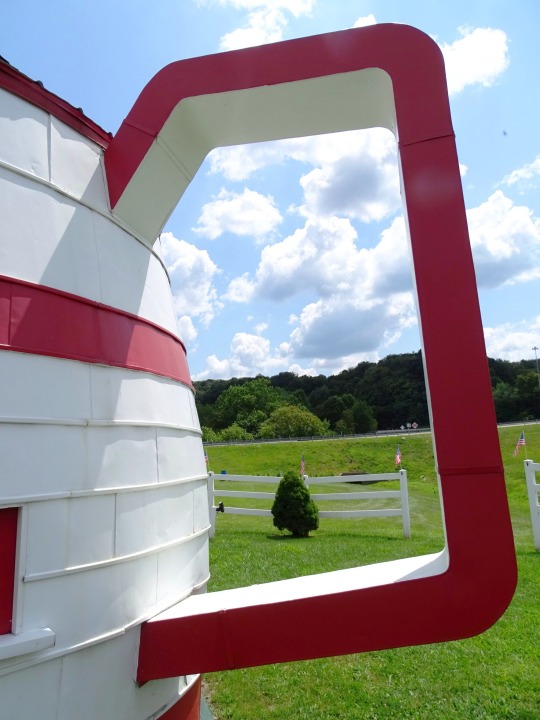
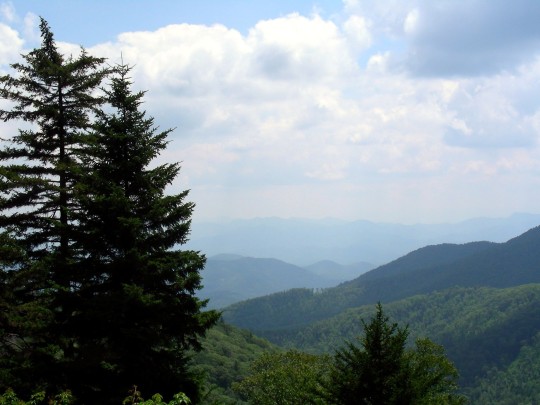

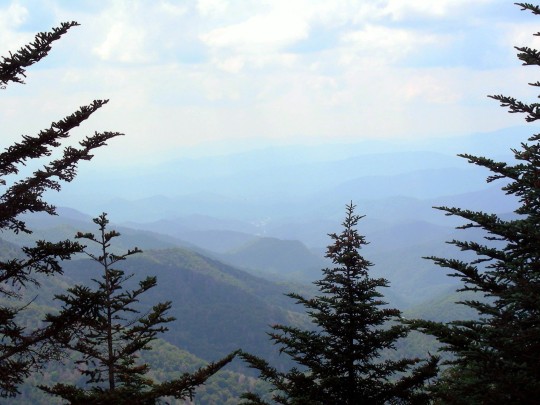

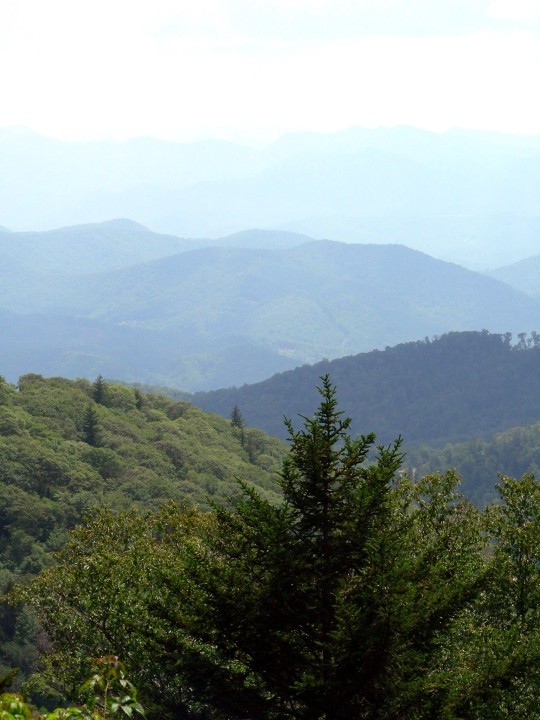

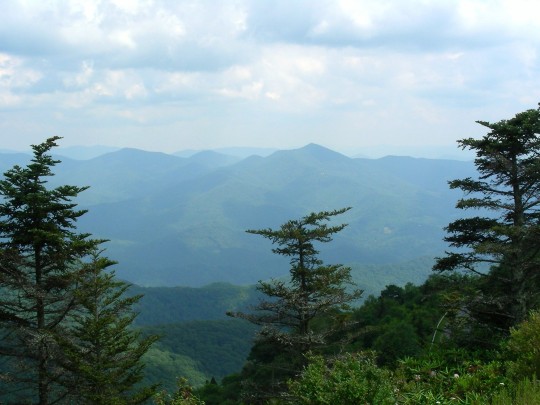
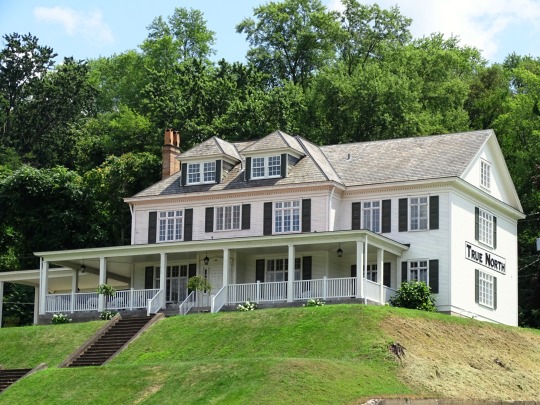
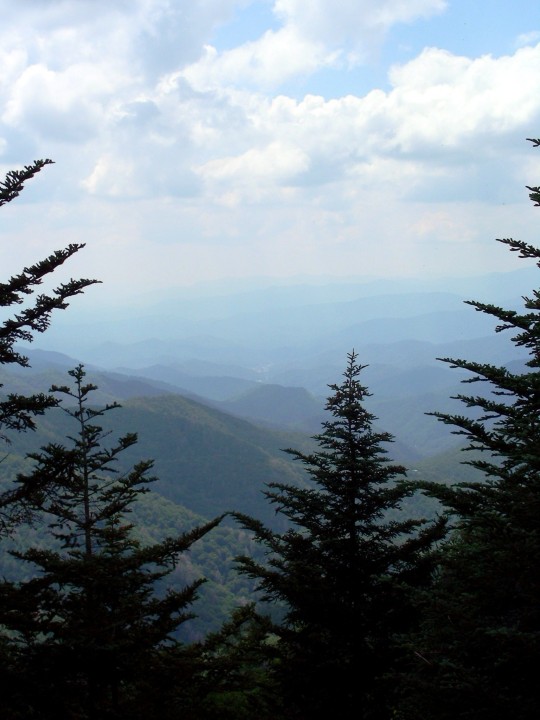
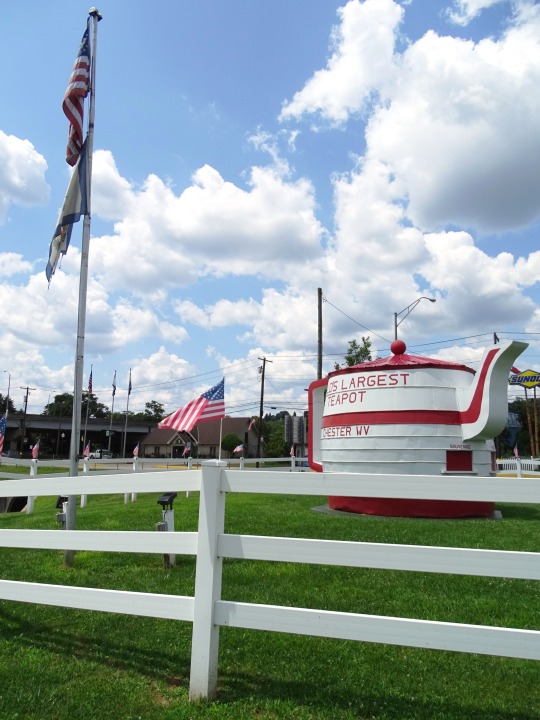
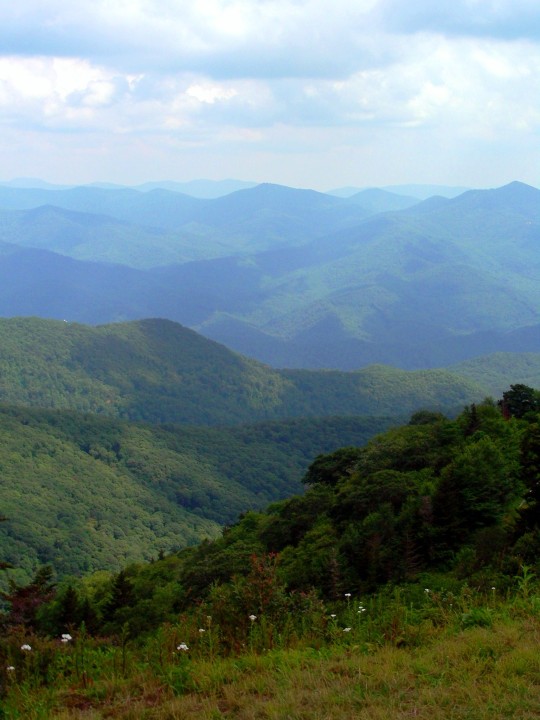

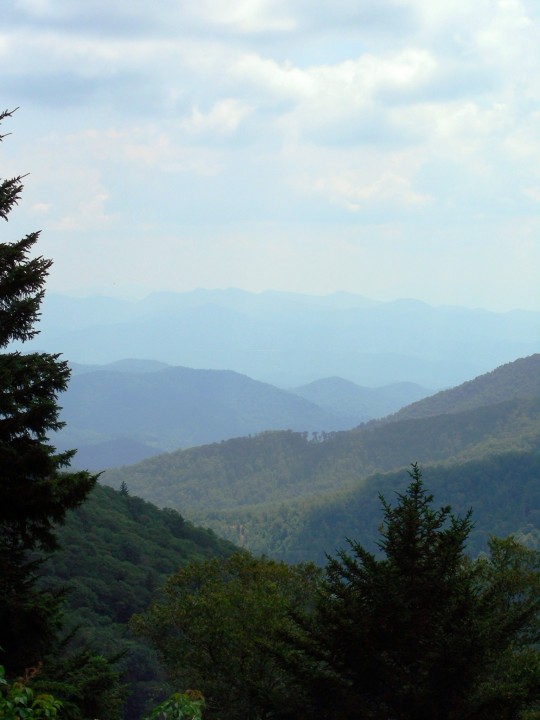
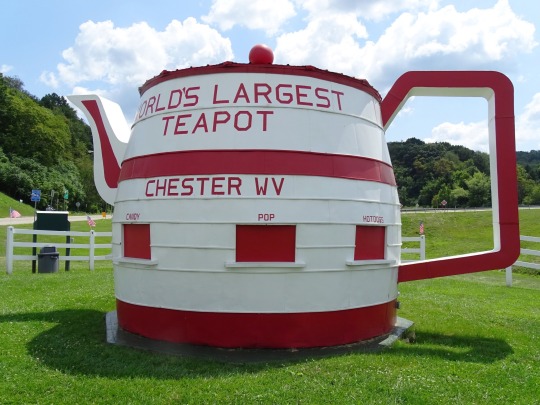

West Virginia was admitted as the 35th U.S. state on June 20, 1863.
National West Virginia Day
National West Virginia Day is on June 20 every year. This day celebrates West Virginia as the last state created from one of the thirteen original colonies under the British Empire. The day marks the birth of a region that is home to some of the largest forests in the country, an industry of coal mining, and a rich cultural history. Yes, there is so much that West Virginia has that its residents can be proud of. This West Virginia Day, step out and explore the beauty and history of the state. Most importantly, let your infectious energy inspire others to celebrate, too! West Virginia has vast beautiful landscapes with three popular mountain ridges namely, Allegheny, Appalachian, and the Blue Ridge Mountains. West Virginia is the largest producer of coal east of the Mississippi River. The state has deep cultural roots and heritage from its native ancestors.
History of National West Virginia Day
Before the arrival of European settlers, West Virginia used to be a favorite hunting ground for numerous Native Americans. It has old earthen mounds constructed by different mound builder cultures. Once the Europeans arrived and settled here, the locals were pushed to the outskirts.
The earliest civilization in the region was in 10,500 B.C. when the Paleo-Indian culture appeared along the major river valleys and water sources. Subsequently, the Adena culture was the dominant influence in West Virginia in the year 500 B.C. The Adena Indians would use ceremonial pipes almost like works of art. They were also called the Woodland Indians. They lived in round wicker-sided and bark sheet roofed houses — wigwams and grew sunflowers, gourds, and squash. Their community had farmers and cultivators. They also reared dogs as pets.
The formation of West Virginia as a state in the U.S. was a tumultuous one due to the sectional differences that existed within it. In fact, around 2,000 residents had even petitioned for the creation of a 14th colony that would be named ‘Westsylvania.’ This colony would have included Maryland, Virginia, Kentucky, and Pennsylvania if the petition had been approved by the Continental Congress.
In 1829, the Virginia Constitutional Convention met in Richmond to discuss reforms to Virginia’s outdated constitution. Philip Doddridge wanted western Virginians to get a more democratic system of government but these desires were rejected by leaders from east of the Alleghenies.
The state of Virginia voted to break away from the United States during the time of the Civil War in 1861. This was unsuccessful, leading to the formation of the state called West Virginia which would be in support of the Union. When the American Civil War occurred, Virginia almost left the United States and was all set to join the Confederate States. However, on April 20, 1863, President Abraham Lincoln made a decision that changed history as we know it — he declared that West Virginia would be a part of the U.S. as a separate state. Virginia became a member of the Union in 1863. By 1864, the informal celebration of West Virginia Day was common and it formally became a state holiday in 1927.
After the formation of the state, there was also some discourse regarding making the city of Wheeling the capital. In 1870, Charleston became the capital instead, but the decision was again reversed to make Wheeling the capital in 1875. To solve the matter once and for all, a statewide vote took place in 1877, and Charleston was finally elected as the capital. Every year on West Virginia Day, ample festivities take place across the state, as well as in the Charleston capitol complex. Seeing the complicated history of West Virginia, it is not a surprise that people go all out in celebrating its creation.
National West Virginia Day timeline
10,500 B.C.
The Earliest Civilization in West Virginia
The Paleo-Indian tribe appears along the major river valleys and water sources in the region.
9000 B.C.
The Early Settlers
West Virginia is populated by the first settlers.
500 B.C.
Influence of the Adena Indians
Also called the Woodland Indians, they make contributions to arts and culture in West Virginia.
1700s
The Change
The Europeans begin colonizing the land.
1829
The First Constitutional Convention is Organized
The Virginia Constitutional Convention meets in Richmond to discuss its outdated constitution.
1863
West Virginia is Granted Statehood
Congress grants statehood to West Virginia on June 20, 1863.
1942
Paying Homage
A law requires students and teachers to salute the American flag.
National West Virginia Day FAQs
What is closed on National West Virginia Day?
It’s a state holiday in West Virginia. For this reason, many government offices, libraries, and schools remain closed on this day.
Is West Virginia a Red State?
West Virginia is a Republican state currently. Republicans John McCain won the state in 2008, followed by Mitt Romney in 2012, and Donald Trump in 2016 and 2020.
What is the most common job in West Virginia?
The most common jobs held by residents of West Virginia are cashiers and sales workers. Truck drivers and registered nurses are also some of the common professions.
What is the safest city in West Virginia?
Currently, New Martinsville has been declared the safest city in the state.
How To Celebrate National West Virginia Day
Plan a trip: What’s a better way to celebrate this day than to plan a vacay to West Virginia! It’s a gorgeous state with lots to see and do.
Research the history of the state: The best way to celebrate the day is to research the heritage of West Virginia, its history, why it was formed, and how it has progressed over time. Reading up on the culture of any country, city, town, or state can truly be inspiring.
Visit their local museums: If you are visiting the state, make sure to drop by the local museums there. It will give you a lot of insight into the state’s history and culture.
5 Interesting Facts About West Virginia
It was supposed to be named ‘Kanawha’: The state was to be named after a Native American tribe, but officials went with West Virginia.
A Native American burial ground: The oldest and largest Native American burial ground in the nation is located in West Virginia.
A large discovery: North America’s largest alluvial diamond, the Punch Jones Diamond, was discovered in Peterstown.
The first rural free delivery mail service: In 1896 in Charles Town, the Post Office Department’s pilot program launched this mail service to try out the practicality for a country-wide rural delivery system.
The oldest dime store is found here: America’s oldest dime store, Berdine’s Five and Dime, is in Harrisville in West Virginia.
Why We Love National West Virginia Day
It is a beautiful state: This day makes us look closely at the many natural landscapes that this state has to offer. There are so many things to see and appreciate here. West Virginia Day brings to light the past of the state and the hurdles it had to overcome to earn the status it has today. It’s achievements like this that fuel the fire of patriotism.
To remember the history: Days such as these play a great role in highlighting the history of a country. This reminder is important so people never forget the sacrifices that were made in the past. National West Virginia Day also tells us about how West Virginia achieved statehood and the many political discussions and debates that preceded that. We must always remember the contributions of everyone who made this a reality.
To boost tourism: The increase in tourism can always help local communities in the state. It will also boost the overall economy of West Virginia if more tourists come to visit. West Virginia day excites the residents and motivates them to acknowledge the long journey the state embarked on to make a difference.
Source
#World's Largest Teapot#Chester#Appalachian Mountains#C.A. Smith Mansion#architecture#original photography#vacation#tourist attraction#landmark#travel#cityscape#landscape#roadside attraction#Blue Ridge Mountains#2009#forest#woods#countryside#anniversary#US history#US Civil War#35th US State#20 June 1863#American Civil War#USA#National West Virginia Day
2 notes
·
View notes
Text
really funny that those state association polls going around make absolutely no mention of the various first nations peoples they were stolen from. no pueblos for new mexico? no mound builders for mississippi? new york had a fucking "rats" option but not one for Haudenosaunee/Iroquois. fuck you forever actually.
3 notes
·
View notes
Text
Chicago's Fascinating History of Change

Chicago is one of America's largest cities, having grown from a small village of Native Americans to the bustling metropolis it is today. Its fascinating history takeout can be traced through both its cultural roots and developing infrastructure over the last 2 centuries.

Chicago's History of Change. Photo by Victor Lozano. Unsplash.
Chicago's History in Rich Explorers
The City of Chicago, with its extensive and rich history, has witnessed significant transformations. As one of the largest cities in the United States, it has evolved from its founding by French explorers to becoming an industrial powerhouse. Chicago has navigated through numerous eras, leaving an indelible mark on America. Established in 1779 as Fort Dearborn by Jean Baptiste Point du Sable, a fur trader of Haitian and African descent and considered Chicago's first permanent resident, the city's historical tapestry is woven with diverse threads.
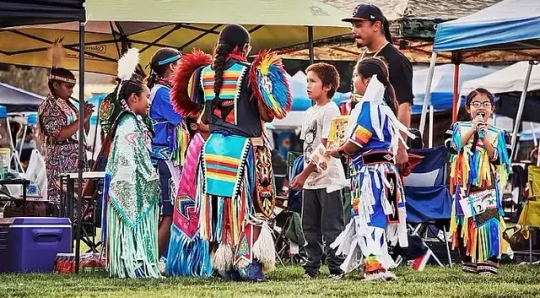
Chicago's History of Change. Photo by Victor Lozano. Unsplash.
Early Settlements: Native American Tribes
The history of the United States is intrinsically linked to that of Native American tribes, who first settled in North America thousands of years ago. Tribes like the Apache, Cherokee, and Sioux were among the earliest people to inhabit the continent long before Europeans began exploring. These tribes lived a nomadic lifestyle for much of this time, forming small settlements as they followed migrating animal herds or sought out lands with more fertile soils. As these settlements evolved, becoming more extensive and intricate, they developed distinct cultural identities. Notable examples include the Iroquois Confederacy, an alliance of five Native American nations, and the Mississippian Mound Builders, who constructed expansive earthworks in present-day Louisiana and Mississippi.

19th Century Boomtown. Photo byBernd Dittrich. Unsplash.
19th Century Boomtown: Immigration and Development
The 19th century brought an influx of immigrants to the United States, particularly in cities like Chicago. Many immigrants were drawn to this bustling city by its promise of opportunity and potential for personal growth. This time marked a significant boomtown as new businesses, industries, and infrastructure began to develop remarkably. As these immigrants settled into their new city, they quickly made their mark by introducing fresh ideas and innovations that led to further economic growth. By the end of the 19th century, Chicago had become a major industrial center with an international economy rivaling other large cities worldwide.

20th Centuries. Photo by Geoffrey Hubbs. Flickr.
Manufacturing and Migration: 19th and 20th Centuries
The 19th and 20th centuries marked a period of massive industrialization, and increased demand for manufacturing labor came with it. By 1900, in Chicago's metropolitan area factories. Many of these employees had come from Germany, Ireland, Italy, and other parts of Europe to work in the factories due to limited job prospects back home. This need drove many people to migrate from rural areas to large cities such as Chicago in search of employment opportunities. Chicago was once known for its large stockyards that processed livestock meat, but the city also grew into one of the most important centers for manufacturing in the United States. Immigrants were critical in fueling Chicago's remarkable growth during this time. They brought new skills and ideas that helped propel the city into a major center for innovation and industry.

Chicago Fire of 1871. Photo by Meridith112. Flickr.
The Great Chicago Fire of 1871
The Great Chicago Fire of 1871 remains one of the most catastrophic disasters in U.S. history. Sparking on October 8th, a small fire broke out on the Southwest Side of Chicago, swiftly engulfing the city. The inferno raged for two days, consuming over three square miles of land and devastating an estimated 17,500 buildings. The cause of the fire is unknown to this day, though many theories exist as to what may have sparked it. Some believe that a cow belonging to Mrs. O'Leary kicked over a kerosene lamp in her barn, while others suspect that faulty wiring or arson was responsible for starting the blaze. Whatever its cause, conditions were ripe for disaster due to an arid summer that left much of Chicago covered in sawdust and dried lumber - perfect fuel for any spark that might be ignited.

Post-Fire Rebuilds. Photo by Randy von Liski. Flickr.
Growth Despite Adversity: Post-Fire Rebuilds
The City of Chicago is no stranger to adversity, and the aftermath of the Great Chicago Fire of 1871 is a prominent example. Despite this catastrophic event, the city was able to rebuild and grow in the wake of destruction. With determination and resilience written into its history, it is no surprise that Chicago has been able to once again find success after facing another setback: the wildfires of 2020. In June and July last year, more than 11,000 acres were burned by wildfires in northern Illinois due to extreme weather patterns across the Midwest. Fortunately for the citizens of Chicago, despite these conditions leading to some property damage, the city maintained its strong sense of community throughout its recovery efforts. After a summer full of dedicated work from local officials and volunteers alike, many areas have experienced positive change as they rebuild their city.

Changing Landscape. Photo by Jim. Flickr.
Changing Landscape
The 21st century has changed the face of cities, and Chicago is no exception. For centuries, people have flocked to this storied city on Lake Michigan's western shore for the opportunity and a chance to make a home for themselves. But in the last 20 years, the city has seen changes entirely transforming its landscape. The City of Chicago boasts a long and rich history. As one of the largest cities in the United States, it has undergone substantial transformations over the years. From its founding by French explorers to its evolution into an industrial powerhouse, Chicago has navigated through numerous eras, leaving an indelible mark on America. Established in 1779 as Fort Dearborn by Jean Baptiste Point du Sable, a fur trader of Haitian and African descent and considered Chicago's first permanent resident, the city's historical tapestry is woven with diverse threads.
Conclusion
Chicago boasts a long and illustrious history marked by adaptability. Originating as a humble river settlement, it has transformed into a major metropolis. Over the years, the city has experienced numerous changes, including population booms, economic and technological advances, and architectural wonders. Chicago's story of progress is both exciting and ever-changing. Chicago has a rich history and numerous attractions, such as The Magnificent Mile, Navy Pier, and the Art Institute of Chicago. There are also world-class shopping districts, lively entertainment venues, and plenty of outdoor activities to enjoy during all seasons of the year. Moreover, its diverse communities offer an inviting atmosphere and there are many different cuisines with many different cuisines to sample from around the world. With so much to see and do in Chicago, it's no wonder it continues to be a popular spot for visitors from far and near. Sources: THX News & Wikipedia. Read the full article
#Chicago#Chicago-ACitywithaHistory#Chicago'sFascinatingHistory#HistoryofChicago#TheChicagoAthenaeum#UniversityofChicago
2 notes
·
View notes
Text
Ancient Mississippian Culture, pt. 1
The Southeast United States is considered the origin of N. American mounds. The Mississippi Mound builders date from 1000 C.E. to 1700 C.E. There were three different Mississipian periods of mound building in the South. There was the Early Mississippian period, Middle Mississippian period, and the Late Mississippian period. During the Mississippian Culture period, many mounds were built (nps.gov).
(Wikipedia)

Cahokia Complex (beritagedaily.com)
Cahokia is considered a part of Mississippian Culture. Cahokia Mounds State Historical Site is located in western Illinois. It was fully occupied by Cahokia people around 1050 A.D. The Quebec missionaries named it “Cahokia” meaning “Wild Geese” in 1699. There is an upcoming post with an illustration of an native Africans in Illinois
(Britannica.com).
Written By: Flora M. White-Cooper
0 notes
Text
First Settlers Extant remains multiply during the Mound Builders…
First Settlers Extant remains multiply during the Mound Builders… First Settlers Extant remains multiply during the Mound Builders… First Settlers Extant remains multiply during the Mound Builders… First Settlers Extant remains multiply during the Mound Builders… First Settlers Extant remains multiply during the Mound Builders Epoch, which covered the period roughly from AD 500 to 1350. Manmade mounds across the eastern portion of the state mark this period. Descendants of the Caddoan-language family of tribes who likely emigrated west from the Mississippi River Valley area constructed them after settling in the area. These non-nomadic early Oklahomans used them for a variety of purposes, including religious temples, burial shelters, and homes-the latter designed for protection against flooding. The Spiro Age, roughly AD 900 to 1450, was the “Golden Age” of the state’s pre-recorded history period. Leading Oklahoma historian Bob Blackburn says that though Spiro never had a population of more than five thousand people and was not an economic power, it was the spiritual/religious center of the ancient Southern Mississippian Empire. A manmade hill designed as a burial temple and discovered in the 1930s near the Poteau River valley town of the same name in eastern Oklahoma provides rich insight into the Oklahomans of this period. Featuring a rot-resistant cedar structure and millions of tons of moved earth, the artifacts contained in the Spiro Mound reveal the history of its people, which included artisan and priestly classes. Read the entire Oklahoma story in John J. Dwyer’s The Oklahomans volume 1 of a 2-part series on the 46th state and the people who make this state very special.
#oklahoma#history#john dwyer#the oklahomans#chocktaw#cherokee#seminole#chickasaw#sooners#boomers#89ers#land run#okies
0 notes
Text
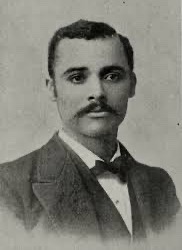
Dr. Alfred Oscar Coffin (May 14, 1861 - September 6, 1933) was the first African American to earn a Ph.D. in biological sciences and ended his career as Professor of Romance Languages at Langston University. Born in Pontotoc, Mississippi, he earned his BS at Fisk University and his MS and Ph.D. in Biology at Illinois Wesleyan University in 1889. Beginning in 1887, he taught for two years at Alcorn Agricultural & Mechanical College. He was Professor of Mathematics and Romance Language at Wiley University (1889-95) where he found time to write a treatise on the native plants there. Back at Alcorn A&M (1895-98), he worked as the campus disbursement agent. He was a public school principal (1898-99) in San Antonio and Kansas City, Missouri. Starting in 1910 for several years he worked as an advance agent for Blind Boone Concert Company, promoting the blind ragtime musician.
His most significant scholarly accomplishment was The Origin of the Mound Builders which tracked the ancient Indian mound builders of the Mississippi Valley to their origin in southeastern Mexico. The second was his book Land Without Chimneys, Or The Byways of Mexico. Having traveled extensively in Mexico—particularly Monterey, Mexico City, and Guadalajara—the book is part travelogue, part history of the people of Mexico, and, oddly enough, part speculation on a connection between the ancient peoples of the region and the fabled civilization of Atlantis. His book marked the first time an African American had published a significant book concerning Latin Americans. #africanhistory365 #africanexcellence #africanhistory365 #africanexcellence
0 notes
Text
Mysterious Mound Builders of Wickliffe
Wickliffe, in Ballard County at the confluence of the Ohio and Mississippi rivers, is a hotbed of archaeological research because it was once home to a mound-building community, about which we know very little.
What do we know about them? Well, they made beautiful pottery, especially of eerie-looking owls, symbolic of the underworld and the dead. They're generally regarded as having been part of the Mississippian culture, which is considered the probable ancestor of the later Native American tribes that populated the area by the time European settlers got here. It should be noted that the entire Mississippian geologic period from 360 to 320 million years ago, which is different from the Mississippian culture.
Probably. Possibly. Archaeologists and ethnologists like to put in boxes and assign things to categories as much as the next person, and so they separate the Mississippian culture into three extremely broad, extremely vague, and extremely arbitrary categories.
Early. Early Mississippian cultures are said to be those making a transition from a more primitive way of life to one of increasing sophistication. The Early Mississippian period is considered to be circa A.D. 1,000-1,200.
Middle. The middle period is considered the peak of the Mississippian people's development, because it was then that they instituted a form of government, being led by a chief in a chiefdom. The middle period of growth is considered to have taken place circa A.D. 1,200-1,400.
Late. This is where things get really interesting. The many tribes that we now retroactively classify as Mississippian were not necessarily connected or closely linked, and many lived out most of their existence isolated from one another. They didn't keep in touch with Web sites and e-mail, and they didn't have a newsletter. And yet, their civilizations all began to go down the tubes at exactly the same time. A way of life that had sustained itself for centuries fell apart, and for no discernible reason. The tribes simply and completely vanished from Wickliffe.
Why? We don't know. Is there any sign of war or disaster in the city's remains? No. Is there any sign of disease or epidemic? No.
Something made a centuries-old civilization pack up everything and move out. They left their burial mounds behind, which stayed in tact for centuries-until 1930, when a man named Fain King looked upon the mighty works of those enigmatic denizens of the past and knew what must be done: He dug up the sacred mounds and turned the place into a tourist trap.
This sad state of affairs continued until 1983, well past the point when someone should have stood up and said, "Wait a minute, what the heck are we doing?" Thankfully, Murray State University finally reclaimed the site in the name of scientific research, and in 2004, the area became federally protected land as part of the state parks service.
Today you can visit the Wickliffe Mounds State Historic Site, its gift shop, and museum, which consists of three excavated mounds, demonstrations of Mississippian burial practices, and displays of artifacts from teh site. These artifacts include peculiar figural with haunting faces.
The most famous of all Wickliffe artifacts, however, was a creepy effigy of a great horned owl, which was unfortunately stolen by burglars in 1988 and never seen again. However, like priceless works of famous art heisted from museums, such items are nearly impossible to sell, even on the black market. The purloined owl totem probably currently occupies a display case or special perch in a secret room somewhere viewed by who knows for who knows what purposes.
Let us take some minor comfort in knowing that whoever stole the owl and whoever currently holds it today will suffer a curse for their deeds and will pay sooner or later. Sure as there's feathers on a chicken.
0 notes
Text
youtube
I discovered that today is Native American Day, so I decided to switch Hattusa with Cahokia. The biggest known city of the Mississippi Mound builder culture and at its height the biggest urban center in North America north of Mexico. We look at the known history, the discovery and some of the debate of what kind of society/state Cahokia was at the center of?
Hope you enjoy.
0 notes
Text
Ohio's Landmark: The Great Serpent Mound
The early North American “Mound Builders” resided predominantly in the current Ohio Valley and Mississippi regions. The Adena people, the most ancient among them, thrived from 1000 BCE to 200 BCE, leaving behind numerous mounds stretching across North America, from Wisconsin to Mississippi. Photo by Flickr One of the rare surviving relics from these mound builders is the Great Serpent Mound – a…

View On WordPress
1 note
·
View note
Photo
That's *definitely* ancient Memphis, Egypt, after which Memphis, Tennessee, was named. Even if you do something theoretical with mound-building cultures and pyramids -- I'm not remotely up to date on the Mound Builders or where Cahokia is relative to Memphis TN, archeology class was a long time ago and I was supposed to be in bed almost four hours ago -- the stern on the boat in the foreground is *completely* diagnostic. That flared stern decoration is mimicking the shape of an Egyptian papyrus boat, and I'm pretty damn sure the Mississippi nations in what is now Tennessee didn't have papyrus.

Ancient Memphis (Tennessee) depicted in approximately 2500 BC.
#no offense to anybody who reblogged#i just had a massive special interest in the history of sail as a kid#and was also fascinated by experimental archaeology about human migration using boats#always reblog the debunking#as one of my friends says
4K notes
·
View notes
Photo
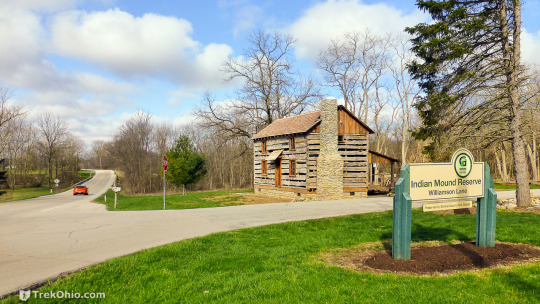
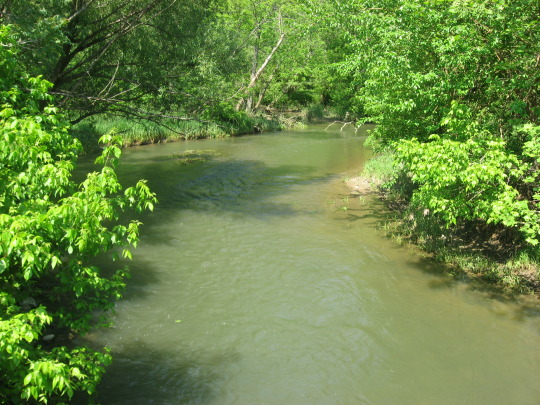
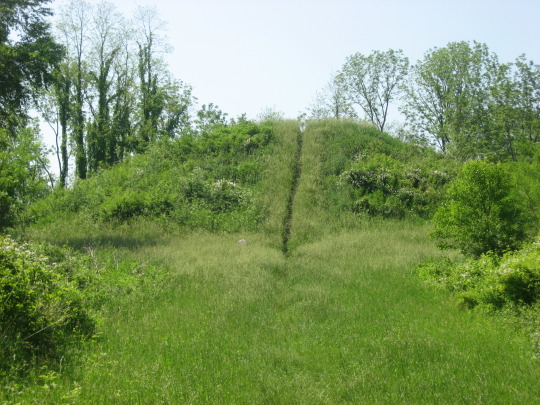

Indian Mound Reserve / Peterson Park
2750 US-42
Cedarville, OH 45314
Indian Mound Reserve is a public county park near the village of Cedarville, Ohio, consisting of three parts. The reserve is named for two different earthworks within its bounds — the Williamson Mound and the Pollock Works, and Peterson Park straddles Massies Creek as it flows through a small canyon. In Peterson Park, both forks of Massies Creek flow through Cedarville Township from the east to their confluence in the township's center, whence the creek flows westward toward the Little Miami River. For the first 2 miles below the confluence of the forks, the creek utilizes a shallow but sheer canyon that reaches as deep as 40 feet below the surface of the surrounding terrain. Nathaniel Massie is reputed to have battled a Shawnee band under Tecumseh and forced them over the stream at the canyon. By the early twentieth century, local residents had known the vicinity of the "Cliffs" as a picnicking ground for the past hundred years, and calls were being made for its conversion into a park. In 1929, owners D.S. Williamson and a Xenia bank donated the Williamson Mound to the Ohio Historical Society. Today, Indian Mound Reserve is operated as a unit of the Greene County Parks, which uses it to host events such as children's camps. Hiking trails, picnic grounds, a log cabin, Cedar Cliff Falls, and the ancient earthworks are among the attractions within the park, which lies along U.S. Route 42. The earthworks are located on opposite sides of the creek: the Pollock Works on the southern side, and the Williamson Mound approximately 1,650 feet, away on the northern side.
The Williamson Mound is a large mound in a field near Massies Creek. In 1881, it was described as being about forty feet high and one hundred fifty feet in circumference. It is perfectly oval in form, and has on its surface trees of a century's growth, denoting that the mound is very old. From its summit can be seen a distance of several miles in every direction." Its construction was attributed to the mysterious Mound Builders of old, who surely constructed it as a watchtower from which to observe enemies from afar. Local residents are believed to have dug around the mound around the turn of the twentieth century, but little damage appears to have been done. In the early 1970s, its dimensions were reported as being 150 feet in diameter by 27.5 feet in height; its decrease in height may have been the result of differing measurements, as in 1848, the Greene County surveyor had reported its measurements as 30 by 140 feet. More recent archaeological studies of the site have concluded that it was constructed as a burial mound by people of the Adena culture in the final centuries before Christ. While the mound has never been scientifically excavated, its great size suggests that its construction took place over an extended period of time, leading archaeologists to conclude that it may contain evidence of multiple stages of Adena society as well as in the mortuary traditions practiced on those buried in the mound.
The Pollock Works occupy a high promontory above the southern side of Massies Creek: both the northern and southern sides are the steep limestone walls, here averaging 25 feet in height, from which the name of "Cliffs" was derived. Although occasional fissures pierce the cliff, permitting access through the old creek channel on the promontory's southern side, only via an isthmus on the western side is the promontory easily accessible, due to its gentle slope. The area of the promontory is approximately 12 acres. Across the isthmus are the remnants of small crescent-shaped earthworks and an artificial wall, which in the 1840s measured 30 feet thick at the base and 10 feet high; it is pierced by three small gateways, at each of which was originally located a stone mound. Due to its comparatively inaccessible location, Squier and Davis proposed in their Ancient Monuments of the Mississippi Valley that the site was a fortification at which a simple palisade could render the promontory impregnable. The works were discovered soon after Greene County was settled in the early nineteenth century and first made known to outsiders by Squier and Davis. In the 1910s, they were believed to have been the work of the Fort Ancient people, who were totally different from the higher Hopewell culture of the Scioto valle", and who would in times of danger retreat to the isolated Fort Ancient site. It was one of eighty-four archaeological sites observed in 1914 by William C. Mills' countywide archaeological survey, which deemed the Pollock Works the county's premier site. Scientific excavations under a Wright State University archaeologist have demonstrated that the Pollock Works were built by the Hopewell in a five-stage process that started in the first century after Christ. It appears that Squier and Davis correctly ascertained the defensive capabilities of the site; at some point in its history, a palisade stretched across the isthmus, although it was destroyed by fire and later buried by a fresh layer of earth. Although the site was seemingly employed as a hill fort for part of its history, it appears to have been a religious location and one of numerous Hopewell hilltop ceremonial sites.
Indian Mound Reserve is actively managed by the Greene County Parks, which promotes the beauty of the creek canyon and the history of the earthworks. The archaeological importance of the reserve forms the basis for programs educating elementary-school children about archaeology. Williamson Mound was listed on the National Register of Historic Places in December 1971 — becoming Greene County's first site on the Register aside from Huffman Prairie, where the Wright brothers learned to fly — and the Pollock Works followed two months later.
1 note
·
View note
Photo

Death. Art by Celeste Pille, from The American Renaissance Tarot.
“Presenting the Death card for The American Renaissance Tarot. Our inspiration for the image was a detail of a panoramic painting showing the cross-section of an Indian burial mound under excavation. Native Americans in the nineteenth century reported that these mounds were relics of a lost people, which opened the door wide for speculation about the racial identity of the Mississippi Mound Builders. The mystic Joseph Smith imagined that these ancient Americans were descendants of the lost tribes of Israel, while other nineteenth-century thinkers rather absurdly theorized that the Mound Builders had been white. Our literary inspiration for the Death card is William Cullen Bryant, one of the most talented poets of the period. Bryant’s poetry is suffused with consciousness of death and transience, beginning with his early hit, 'Thanatopsis,' meaning a 'meditation on death.' In 'The Prairies,' Bryant employs his favorite trope: that our steps disturb the millions sleeping in the bosom of earth. He weaves a fantasy about the ancient Mound Builders, and then concludes, 'Thus change the forms of being. Thus arise/ Races of living things, glorious in strength,/ And perish, as the quickening breath of God/ Fills them, or is withdrawn.' The celestial mirror of the Great Serpent Mound in Ohio appears in the sky.” — Thea Wirsching
#Celeste Pille#The American Renaissance Tarot#Death#Major Arcana#Tarot#Mississippi Mound Builders#Literature#William Cullen Bryant#Thanatopsis#The Prairies#Great Serpent Mound#Native#Favorites#Skeleton
9 notes
·
View notes